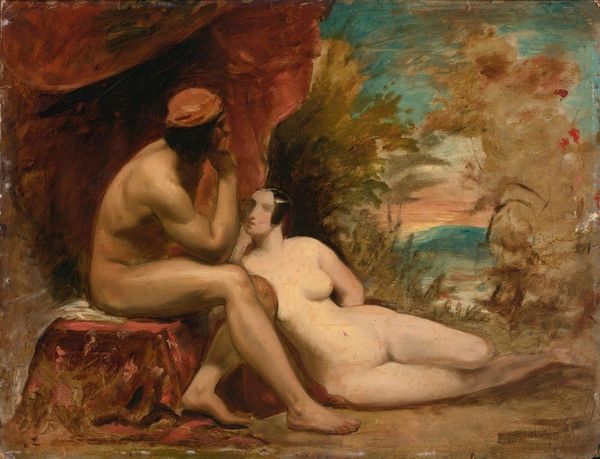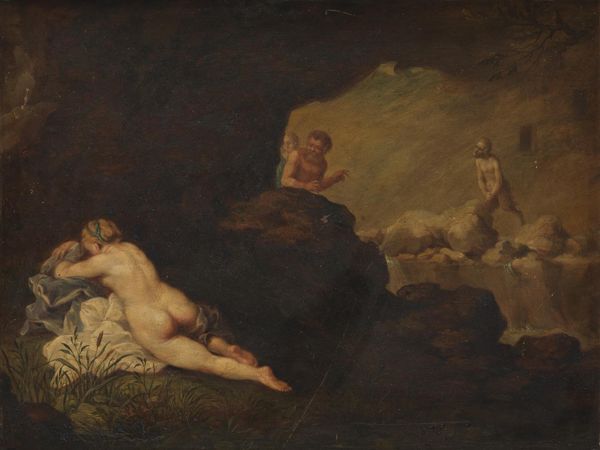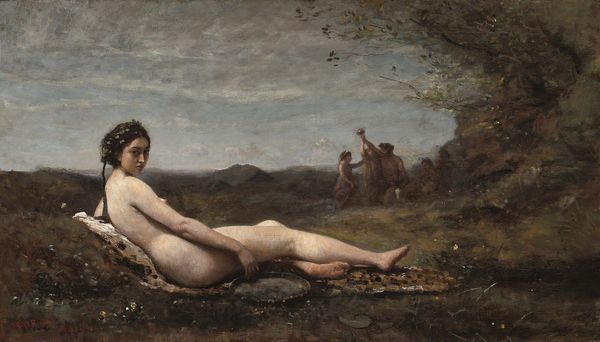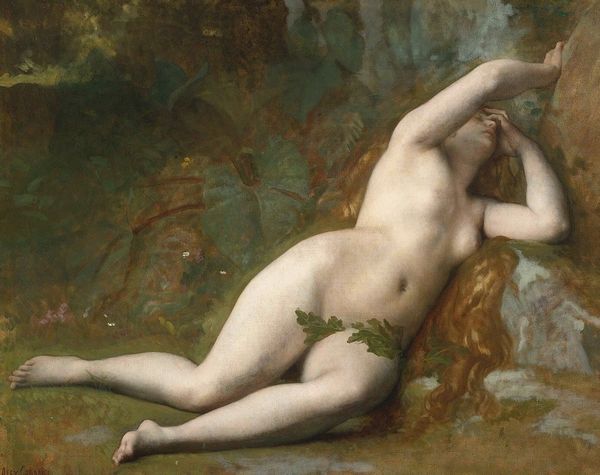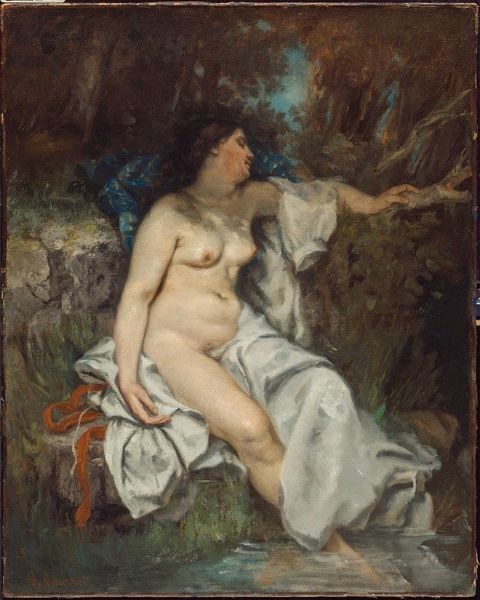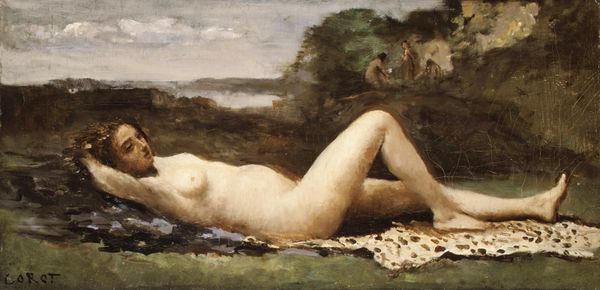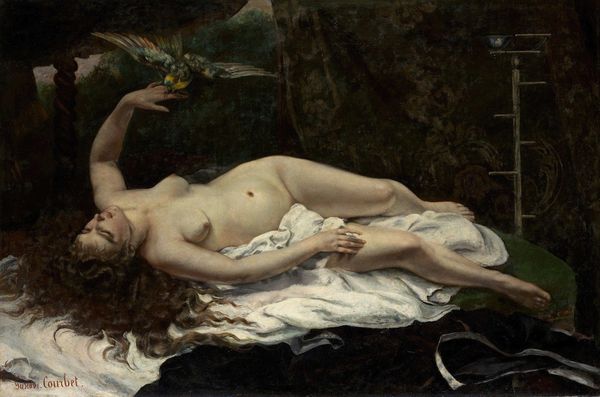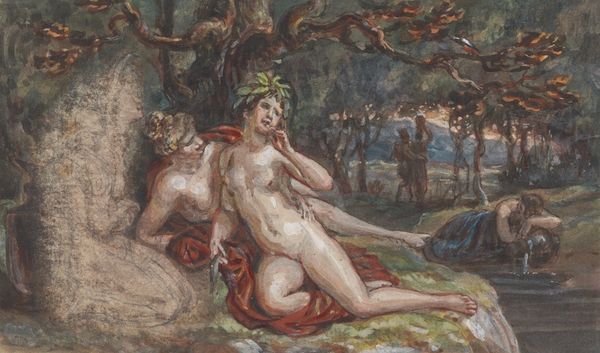
painting, oil-paint
#
neoclacissism
#
allegory
#
painting
#
oil-paint
#
roman-mythology
#
mythology
#
history-painting
#
nude
Copyright: Public domain
Curator: Well, this is Jean-Auguste-Dominique Ingres' "Jupiter and Antiope", an oil on canvas completed in 1851, a key piece from the Musée d'Orsay’s collection. It’s quite the striking image, isn't it? Editor: Striking indeed! My initial impression is one of opulent slumber. Antiope’s pose, so languid and… dare I say… strategically arranged, exudes a sense of dreamlike vulnerability. And then that dark background – a brooding forest that somehow enhances the luminous flesh tones. It's all so very...staged. Curator: "Staged" is a perfect way to describe it. Ingres, always the neoclassicist, orchestrates everything with such precision. The entire composition feels deliberately balanced, a sort of choreographed encounter, doesn't it? Notice how Jupiter, in the guise of a satyr, hovers in the background, and the placement of Cupid? Editor: Precisely. Cupid, lurking, mischievous. And Jupiter… that subtle hint of divine voyeurism framed within classical mythology is heavy with implication. This speaks volumes about the institutional validation of power, the male gaze, the politics of image-making during that era. Curator: Ah, but look deeper, past the surface sensuality. There's a powerful symbol operating here. Antiope, asleep, represents the unconscious, receptive to the will of Jupiter. Ingres plays with the psychology of submission. It almost seems to be representing an allegorical representation of internal feminine vulnerability. Editor: A vulnerable unconscious, or a violated one? Think about the Salon of the time – Ingres and his contemporaries were participating in a visual discourse. This painting exists not in a vacuum, but within a specific context. Doesn't Ingres visually perpetuate these cultural norms regarding feminine passivity through his mythological staging? Curator: Maybe. But Ingres also revered the classical ideals of beauty, form, and allegory. He used those established symbolic forms to express profound psychological states. In viewing mythological context through a psychological prism we are looking at ourselves across centuries. Editor: An artistic vision thoroughly entwined with social commentary nonetheless, I maintain. Revisiting the context is critical. A visually beautiful, expertly crafted depiction… pregnant with uneasy undercurrents about power and representation. Curator: Indeed. Ingres gives us much to consider… centuries later. A truly interesting example of myth filtered through individual artistic temperament. Editor: Absolutely. It’s in this complex, multifaceted dance between aesthetic vision and its cultural echoes that the painting truly resonates with modern eyes.
Comments
No comments
Be the first to comment and join the conversation on the ultimate creative platform.
